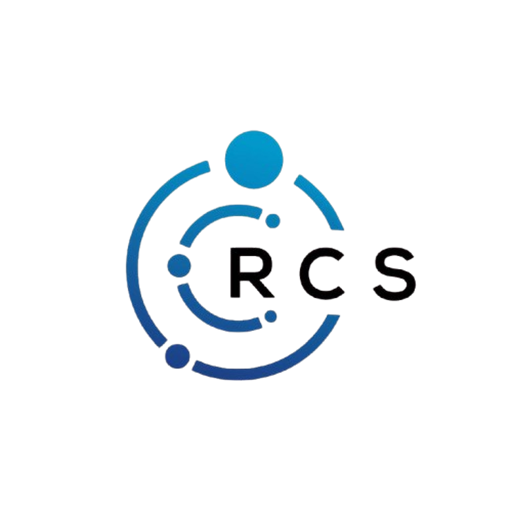In today’s highly digitized world, errors and technical glitches are common occurrences, particularly in computing environments that involve system-level processes, software stacks, and development frameworks. One such complex yet increasingly encountered error is the RCSDASSK problem. While many users may have stumbled upon this term unexpectedly, few truly understand its origins, implications, or how to resolve it.
This guide is your all-in-one resource for everything you need to know about the RCSDASSK problem—from what it is, why it happens, and most importantly, how to fix it. Whether you’re a software developer, system administrator, or everyday user, this in-depth explanation will help you tackle this issue with confidence.
1. What is the RCSDASSK Problem?
At its core, the RCSDASSK problem is a type of system-level error that disrupts the normal functioning of an operating system or application. Although the term “RCSDASSK” does not have official documentation from major vendors like Microsoft, Apple, or the Linux communities, it is believed to be an acronym or internal code related to “Runtime Configuration System Dependency and Software Stack Kernel.”
Users typically encounter the RCSDASSK problem during:
-
Operating system boot-ups
-
Software installation or updates
-
Development framework configuration
-
Driver updates or system migrations
-
Data restoration from corrupted backups
Unlike simple software errors that can be resolved with a restart, this problem often involves deep-rooted issues within the system configuration, software stack, or registry entries.
2. Technical Breakdown of the RCSDASSK Problem
To fully understand the RCSDASSK problem, we must break it down into its possible components.
RC – Runtime Configuration
This refers to dynamic settings that allow an application or system to run properly. Any corruption or misalignment in runtime configurations can lead to application failure or system-level errors.
SD – System Dependency
System dependencies are libraries, drivers, and other software components that the system or application requires to operate. Missing or mismatched dependencies are a leading cause of the RCSDASSK problem.
ASSK – Application Software Stack Kernel
This part refers to the layered architecture of an operating system or framework, especially involving kernel-level processes. Errors in the stack or kernel can cause critical issues, leading to system crashes or failure to boot.
3. Common Symptoms of the RCSDASSK Problem
Identifying the RCSDASSK problem can be tricky, especially since it doesn’t always manifest through a specific message. However, users have commonly reported the following symptoms:
-
Frequent blue screen errors (BSOD)
-
Applications are crashing without warning
-
System boot loops or startup failures
-
Command prompt errors involving system files
-
Sudden loss of functionality in hardware components
-
Log entries showing “RCSDASSK Error” or “Dependency Failure at Runtime Configuration”
If you experience one or more of these issues, the RCSDASSK problem might be the culprit.
4. Main Causes of the RCSDASSK Problem
Understanding the root cause is key to resolving the issue. The following are the most common triggers:
a. Corrupted System Files
System files can become corrupted due to forced shutdowns, virus infections, or bad updates. This corruption may affect runtime configurations and dependencies, triggering the RCSDASSK problem.
b. Incompatible Software or Drivers
Installing incompatible drivers or software can result in a mismatch with existing system components, leading to instability or kernel failures.
c. Incorrect Registry Entries
Faulty registry entries, especially those tied to the software stack or runtime configuration, can prevent the system from initializing essential services.
d. Failed System Updates
Failed or interrupted Windows or Linux updates can leave the system in an unstable state, leading to issues with the application software stack.
e. Malware and Unauthorized Scripts
Malicious software or unauthorized scripts often target system files or kernel components, corrupting the environment required for stable operations.
5. Step-by-Step Guide to Fixing the RCSDASSK Problem
Resolving the RCSDASSK problem involves a methodical approach. Below is a comprehensive guide that you can follow.
Step 1: Perform a Full System Scan
Begin by ensuring there is no malware causing the issue.
For Windows:
-
Open Windows Security.
-
Click on Virus & Threat Protection > Quick Scan or Full Scan.
-
Allow it to complete and remove/quarantine any threats.
For Linux:
-
Use ClamAV:
Step 2: Use System File Checker (Windows)
The System File Checker (SFC) tool scans and repairs corrupted system files.
Steps:
-
Open Command Prompt as Administrator.
-
Run the command:
-
Restart your computer.
If errors are found and fixed, check if the issue persists.
Step 3: Reconfigure the Software Stack
Misconfigured environments are a top cause of RCSDASSK errors, particularly for developers.
On Windows:
-
Uninstall conflicting frameworks (e.g., .NET, Java, Python).
-
Reinstall only the required versions.
On Linux:
-
Rebuild environment using:
-
Use virtual environments for isolated configurations.
Step 4: Repair or Restore Registry Files
For Windows:
-
Press
Win + Rand typeregeditto open the registry editor. -
Back up the registry: File > Export.
-
Look for entries related to recently installed programs or failed updates.
-
Remove invalid or orphaned entries carefully.
Caution: Editing the registry is risky—make a backup before proceeding.
Step 5: Reinstall Critical Drivers
Use Device Manager to reinstall or update drivers.
-
Press
Win + X> Device Manager. -
Expand the category (e.g., Display Adapters).
-
Right-click > Uninstall > Restart PC.
-
Windows will reinstall the default version.
Step 6: Boot in Safe Mode (or Recovery Mode)
Booting in Safe Mode helps isolate the problem.
For Windows:
-
Hold
Shiftwhile clicking Restart. -
Choose Troubleshoot > Advanced Options > Startup Settings > Safe Mode.
For Linux:
-
Hold
ShiftDuring boot, to enter GRUB. -
Choose Recovery Mode.
If the issue doesn’t appear in safe/recovery mode, it’s likely a third-party application causing it.
Step 7: Use System Restore or Reinstall OS
If nothing else works:
System Restore (Windows):
-
Go to Control Panel > Recovery > Open System Restore.
-
Choose a restore point before the issue started.
Reinstallation:
-
Back up your data.
-
Reinstall the OS using official media or a bootable USB.
6. How to Prevent the RCSDASSK Problem in the Future
Once you’ve solved the RCSDASSK problem, taking preventive measures ensures it doesn’t return.
✅ Use Stable Software Versions
Avoid beta releases of drivers or software unless necessary. Stability is key.
✅ Maintain System Hygiene
-
Clear cache and temp files regularly.
-
Use disk cleanup tools.
-
Monitor startup processes.
✅ Backup Regularly
Use tools like Acronis, Macrium Reflect, or Windows Backup to take regular system snapshots.
✅ Use Virtual Environments
For developers, using Docker or virtual machines isolates your system from conflicting dependencies.
✅ Monitor System Logs
Use Event Viewer (Windows) or journalctl (Linux) to spot early signs of system errors.
7. Developer-Focused Fixes
If you’re a developer encountering the RCSDASSK problem during application build or deployment, try the following:
-
Review Build Scripts: Misconfigured paths or dependency mismatches in build scripts (like
webpack.config.js,pom.xml, orpackage.json) can trigger errors. -
Isolate Environments: Use
venv,conda, or Docker to avoid stack conflicts. -
Check Logs: Application logs, especially during deployment (CI/CD), may point directly to a failing module or library.
Conclusion
The RCSDASSK problem might sound intimidating at first, but with a proper understanding of its structure and origins, it becomes a solvable technical challenge. Whether you’re facing corrupted system files, driver conflicts, or broken software stacks, the guide above provides the tools and techniques to restore stability and functionality.
To summarize, always:
-
Stay vigilant with updates
-
Regularly clean and monitor your system
-
Backup often
-
Learn from each error to strengthen your troubleshooting skills
Facing an issue like the RCSDASSK problem is a chance to deepen your technical knowledge and develop confidence in managing system-level challenges effectively. See more

